![]()
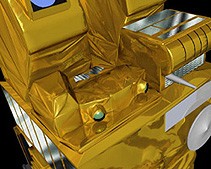
The HRS instrument mounted on the satellite,
next to the VEGETATION instrument
Operating principle and optical path
The HRS instrument is designed to acquire images in the panchromatic band at viewing angles of 20░ forward and aft of the satellite. It can thus obtain stereopair images quickly to generate digital elevation models.
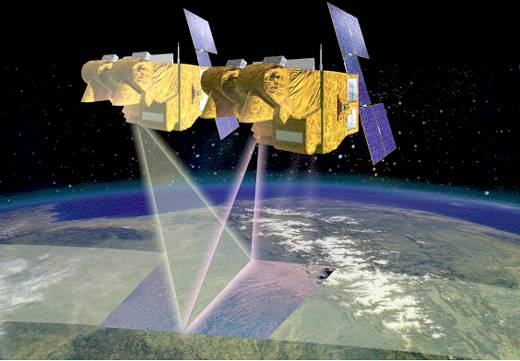
HRS uses the same pushbroom scanning technique
as HRG.
HRS instrument architecture
The HRS instrument consists of:
- A carbon-skin sandwich/aluminium honeycomb instrument panel supporting the mechanical interface with the SPOT 5 satellite and the instrument systems.
- A stereo video module (MVS), which handles and processes data from the detection units, actively controls the instrument's temperature and provides the ancillary systems required to operate it (chiefly power and TM/TC).
- A thermal cocoon encloses the temperature-sensitive
components vital to achieve the instrument's required performance, i.e.:
· The front and rear objectives, mounted on a quasi-isostatic structure to ensure stability. The objectives collect incoming light in the panchromatic band and focus it onto the lines of detectors. It filters out all rays outside the panchromatic band to minimize stray light.
· The front and rear detection units, which house the CCD sensors and electronics. These units convert the light signal into an
electrical signal.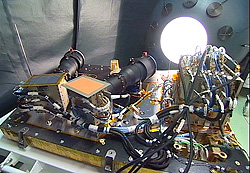 The HRS instrument during integration in October 2000
The HRS instrument during integration in October 2000
The cocoon maintains the instrument's components within the required temperature range.
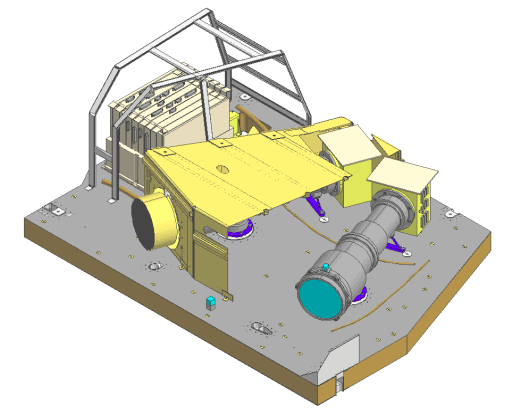
Technical data
|
HRS technical data
|
|
| Mass | 90 kg |
| Power | 128 W |
| Dimensions |
1x1,3x0,4 m |
| Field of view |
+/- 4° |
| Focal lenght |
0.580 m |
| Detectors per line |
12000 |
| Detector pitch |
6.5 Ám |
| Integration time per line |
0.752 ms |
| Forward/aft viewing angle | +/-20░ |
| Performance | |
| Spectral range (panchromatic band) | 0.48 Ám - 0.70 Ám |
|
Ground sample distance
|
10 m |
| Modulation transfer function | > 0.25 |
| Signal-to-noise ratio | > 120 |
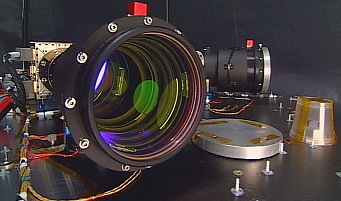
HRS instrument during tests
More:
![]() Optical
subassembly
Optical
subassembly
Image
electronics